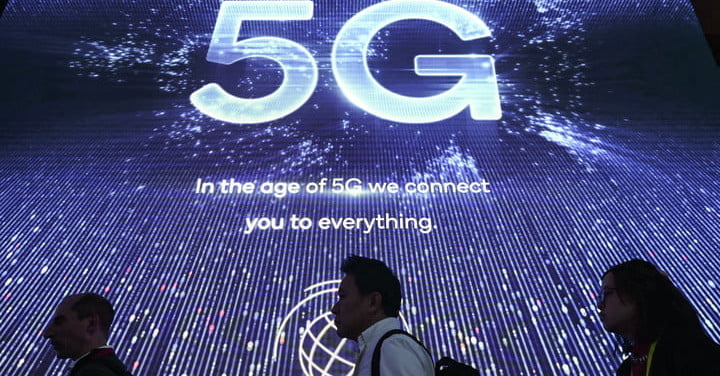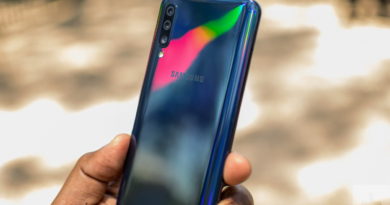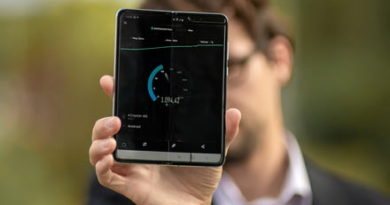5G Coverage Map: Cities With 5G on Verizon, AT&T, T-Mobile
[ad_1]
As you read this, 5G is expanding across the U.S. at a considerable rate. And while you may not have a phone that can connect to the next-gen network just yet, that day is rapidly approaching, as most flagship phones have 5G now. When you have a 5G phone, where exactly is 5G available? This question of coverage always varies by carrier, but nowadays there’s a pretty good chance you have 5G where you live — or close by.
To use 5G, you’ll need two things: A phone that supports 5G, and a network that offers it. There are now plenty of 5G phones on the market, including the entire iPhone 12 series and Galaxy S21 series. All three major U.S. carriers are aggressively rolling out their 5G networks to meet demand, but of course there’s more to it than you’d think based on a visit to the carrier websites.
Here’s where you can find mobile 5G in the U.S., no matter which carrier you’re on.
AT&T 5G coverage

AT&T has a widespread 5G network, but as you’d expect, the type of connection that you get will depend on where you live.
A quick primer on types of 5G: There are two forms of 5G currently in use: Sub-6 and mmWave (millimeter wave). Sub-6 relies on lower frequencies to deliver a much larger network, but the trade-off is that speeds are usually only marginally faster than 4G. While mmWave connections rely on much higher frequencies that deliver dramatically faster download speeds, those radio waves can’t physically travel long distances or make their way through obstacles like walls or even windows.
AT&T’s network largely depends on Sub-6 for its “nationwide” network. And depending on your city, its Sub-6 5G may actually be the same speed, or slower, than 4G because AT&T doesn’t have enough spectrum to deploy to both networks in tandem. In some cities, the company is offering mmWave (5G+, as AT&T calls it) with superfast speeds, but that type of connection is still extremely limited to a few streets in a few major cities. It has a long way to go.
It’s important to note that AT&T really wants you to think you’re always on 5G. If you don’t have a 5G-compatible phone, you may still get a little icon saying that you’re on “5GE,” but that’s not really 5G at all — it’s just AT&T’s new marketing name for 4G. Only when you see “5G” or “5G+” in your status bar will you be on real 5G.
T-Mobile 5G coverage

T-Mobile was the first carrier to deploy a nationwide 5G network, however that network also relies largely on Sub-6 spectrum, so it won’t be as fast as the mmWave networks that some expect when they hear the term “5G” or see carrier TV commercials. T-Mobile’s strategy has focused on building out Sub-6 5G to the exact same towers that currently carry 4G, so its network footprint is nearly the same for both.
T-Mobile has also started to launch mmWave in certain city centers following its merger with Sprint. Like all other carriers, T-Mobile will eventually deploy mmWave in as many cities as possible as part of its multitiered network to address the needs of different population densities. Unlike other carriers, thankfully, it doesn’t give you a different status bar icon when you’re on mmWave — your phone just seamlessly switches between mmWave and Sub-6, and you get the best possible speeds at the time.
One thing the 5G network hasn’t fixed is overall coverage. In dense areas, T-Mobile is really good, but its overall coverage map still falls somewhat behind Verizon and AT&T. There are places in the country where you simply don’t get any T-Mobile coverage — though now it can go toe-to-toe with Verizon and AT&T when it comes to 5G coverage.
Verizon 5G coverage

After years of focusing exclusively on mmWave, and covering a very small portion of the country in the process, Verizon turned on its “nationwide” 5G network using the Sub-6 spectrum. While it’s available in dramatically more places than mmWave, it’s still a little limited in scope across the country, and really only available in densely populated areas. You can at least expect good speeds when you do get it, though. And the ace up Verizon’s sleeve is that its 4G network is incredibly robust, offering great speeds in its own right.
Verizon is continuing to lean heavily into its mmWave network (which it calls UWB, or Ultra Wide Band), despite the fact that mmWave is still highly unreliable. Because of limitations in range and managing obstacles, mmWave is inherently much tougher to represent with a map online. So just because you see mmWave on a coverage map, walking 25 feet could take you in or out of coverage. When evaluating which carrier to choose, look at the nationwide 5G coverage, not mmWave.
If you really care about mmWave, Verizon’s mmWave network is the most widespread and available in dozens of cities already — although, again, only parts of those cities.
Editors’ Recommendations
[ad_2]
Source link




